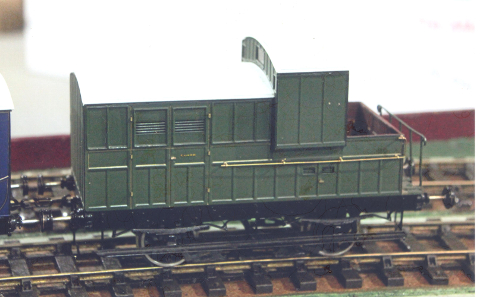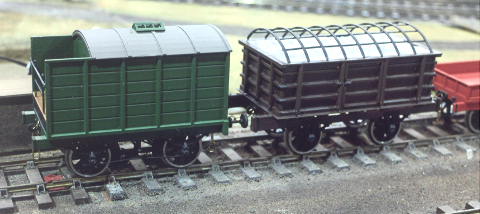
This Brown, Marshalls & Co Brake Van is based on another of Clark’s illustrations in Railway Machinery. Once again, the exquisite detail in Clark’s engravings allows a model to be produced incorporating every detail of the prototype, and as with the other models based on Clark, the drawing was traced directly into CAD from the original engraving and reproduced in etched brass. It is not known which lines this brake (or ‘Break’, as it was spelled then) was sold to but it is hoped that one day a photograph will come to light showing one in service, somewhere. As an aside, it is a particular problem with producing models in the period between the beginning of railways and the end of the 1860s that very few photographs exist, and that most early rolling stock had already disappeared before, as author David Halfpenny puts it, ‘The light of photography fell upon the world’. The model shows a prominent birdcage, or ‘lantern’, and a similar arrangement can be seen in a contemporary engraving of the terrible 1865 crash on the South Eastern Railway in which Charles Dickens was involved. Clark’s drawing shows ‘sledge’ brakes that bear directly upon the rail, a very effective type of brake that was outlawed by the 1860’s because it tended to tear up the track! These breaks are reproduced in working form in the model and the author was warned by the secretary of the local model engineering society that ‘sledge brakes are not permitted in the society’s rules’, which indeed they are not, in 5in gauge

Early London & Birmingham Railway goods vehicles. The brake van on the left was discovered as an engraving in the Great Northern archives by Tadeusz Opyrchal. It is signed ‘J Wright, London’ and though undated it is likely to date from before 1845 when Wright’s moved from London to Saltley, near Birmingham. It is very similar to one illustrated in Railway Machinery, but this one has water ballast rather than the iron bars referred to by Clark. It also has dumb buffers at one end and spring buffers at the other. The water tank raises the floor level through the van and means there is no need for cut-outs in the sides, because a man of average height can easily see over the top. It is possible that this is the earliest known break van from any railway. The covered wagon on the right is illustrated in Samuel Charles Brees Railway Practice, published in sections from 1838, and is simply described as ‘Another Waggon’ from a section about the London & Birmingham Railway. The hooped roof is to support canvas and it is possible that the hoops are made of ash rather than iron. This wagon has side doors and appears to be the predecessor of all the roofed vans that followed on the railways of the world. Both models were traced directly from the original engravings into CAD and printed in one piece using the nylon sintering process.